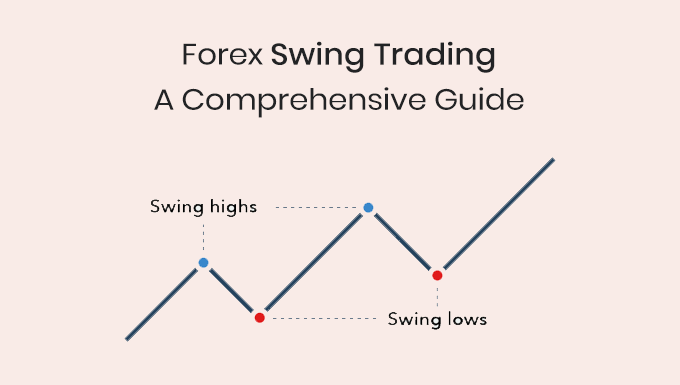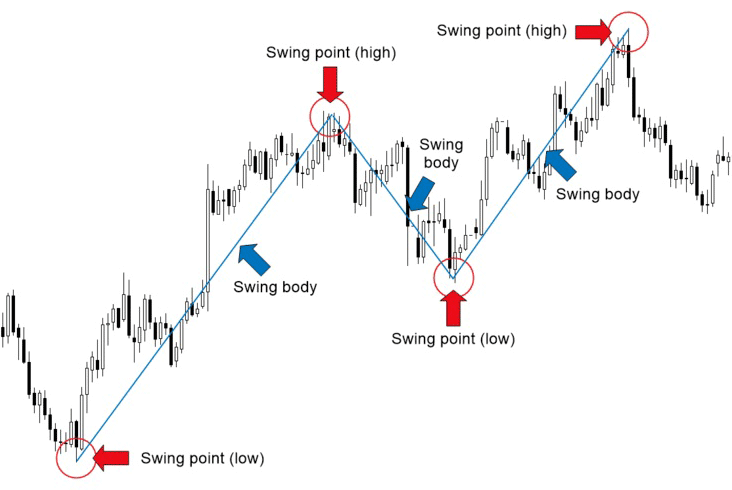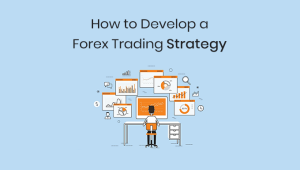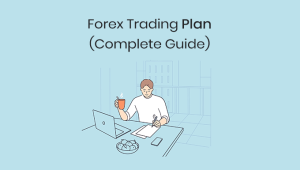Forex Swing Trading has gained significant popularity among both beginner and experienced traders. It stands out as a medium-term strategy designed to capture gains from market swings over several days to weeks. This guide aims to look into its basic concepts, proven strategies, and best practices. Additionally, I will address some frequently asked questions to further enhance your understanding and set you on the path to becoming a successful swing trader.
Table of Contents
• Key Strategies for Successful Forex Swing Trading
• Importance of Technical Analysis in Swing Trading
• Common Mistakes to Avoid
• Benefits of Forex Swing Trading
• Drawbacks of Forex Swing Trading
• Conclusion
• FAQs
What is Forex Swing Trading?
Swing trading in the Forex market involves holding a position either long or short for a period, which can range from a couple of days to several weeks. Unlike day trading, where trades are opened and closed within the same day, swing trading takes advantage of the natural “swing” or oscillation of price movements.
Origin of Swing Trading
The concept of swing trading is not new. It has its roots in the stock market, where traders identified and capitalized on the short- to medium-term price movements or “swings”. The Forex market, with its 24/5 operations and high liquidity, provides an excellent ground for swing trading due to its inherent volatility and predictable patterns.
Forex swing trading doesn’t necessitate constant market monitoring. Instead, swing traders rely on technical analysis, market trends, and sometimes fundamentals to decide when to enter or exit a trade. The strategy is less time-consuming compared to day trading, yet it offers higher potential returns than long-term investments.
Understanding Swing Highs and Lows
A swing high occurs when the price of a currency pair reaches a peak and then starts to decline, while a swing low is when the price reaches a trough before beginning to ascend. By connecting consecutive swing highs and swing lows, traders can map out potential support and resistance levels.
Characteristics of Swing Trades
- Typically last for several days to weeks.
- Rely heavily on technical analysis.
- Less stressful and time-consuming than day trading.
- Greater profit potential than scalping.
The aim of a Forex swing trader is to capture a chunk of a potential price move. While they don’t need to pinpoint the exact tops or bottoms, identifying the main portion of a price move is crucial. This is done by recognizing ‘swings’ in the market.
A crucial aspect of swing trading is the ability to identify support and resistance levels. These levels indicate where the price has historically faced obstacles in moving up or down. Recognizing these can help predict future price movements.
Risk management plays an essential role in swing trading. Setting up appropriate stop-loss and take-profit levels ensures that traders don’t let their losses run or cut their profits too soon.
Swing traders often use chart patterns like flags, pennants, or triangles to predict future price movements. These patterns, combined with technical indicators like moving averages or RSI, can provide potent trading signals.
Key Strategies for Successful Forex Swing Trading
Every Forex swing trader, from novice to expert, requires a set of strategies tailored to capitalize on market swings. These strategies are grounded in both technical and fundamental analysis.
Trend Following
One of the most common strategies in swing trading is trend following. Traders identify an existing market trend, whether bullish or bearish, and aim to enter trades in the direction of that trend. This strategy operates on the age-old wisdom of “the trend is your friend.”
For identifying trends, traders often rely on moving averages. For instance, when a short-term moving average crosses above a long-term moving average, it can signal the start of an uptrend. Conversely, a cross below can indicate a potential downtrend.
Counter-Trend Trading
Unlike trend followers, counter-trend traders aim to capitalize on potential price reversals. They believe that markets overextend and will revert to a mean or average price. This strategy can be riskier since it goes against the prevailing market trend.
Key tools for counter-trend trading include Fibonacci retracement levels, RSI (Relative Strength Index), and stochastics. These tools help identify potential reversal zones where the price might change direction.
Breakout Trading
Breakout traders wait for the price to break out of a defined range or chart pattern. Once a breakout occurs, they enter a trade in the breakout’s direction, expecting the price to continue moving that way.
Common patterns for breakout trading include triangles, flags, and pennants. Confirmation is crucial in breakout trading; false breakouts can lead to losses. Therefore, many traders wait for a retest of the breakout level or use volume as a confirmation indicator.
Pullback Trading
Pullbacks or retracements occur during every trend. Pullback traders aim to enter the market after a pullback, believing the original trend will resume. This strategy provides an opportunity to enter a trending market at a better price.
Indicators like the Fibonacci retracement tool can help identify potential pullback levels. Moreover, trendlines and moving averages can also act as dynamic support or resistance during pullbacks.
Using Moving Averages
Moving averages help smooth out price data and can be useful for identifying potential entry and exit points. When a short-term moving average crosses above a long-term one, it’s often seen as a bullish sign, and vice versa.
Ultimately, the key to successful swing trading lies in choosing the right strategy based on market conditions, rigorous back-testing, and continuous learning. No single strategy guarantees success; traders must remain flexible and adaptive.
Importance of Technical Analysis in Swing Trading
Technical analysis is a critical tool for swing traders. It involves evaluating past market data, primarily price and volume, to forecast future price movements.
Chart Patterns
These are formations created by the price movements of an asset on a chart. Recognizing patterns like head and shoulders, triangles, and flags can provide insights into potential future price movements.
Indicators and Oscillators
Tools like the Moving Average Convergence Divergence (MACD), Relative Strength Index (RSI), and Bollinger Bands can help traders identify potential buy or sell opportunities.
Volume Analysis
Volume can offer insights into the strength or weakness of a price trend. High volume during an uptrend indicates strong buying interest, while high volume during a downtrend suggests strong selling interest.
Support and Resistance
These are price levels at which an asset seems to find difficulty moving above (resistance) or below (support). Identifying these levels can help traders set stop-loss and take-profit points.
Time Frame Analysis
While swing traders typically use daily charts, multiple time frame analysis can offer a more comprehensive view of the market’s direction.
Common Mistakes to Avoid in Forex Swing Trading
Mistakes can be costly in forex swing trading. Identifying common pitfalls and learning how to avoid them can significantly improve a trader’s chances of success.
Overleveraging
One of the most common mistakes is overleveraging. While leverage can amplify profits, it can also magnify losses. Swing traders should use leverage judiciously and understand the risks involved.
Avoiding a structured trading plan can lead to erratic trading decisions. A well-defined trading plan, complete with entry, exit, and risk management criteria, is essential.
Ignoring Fundamental Analysis
While swing trading is primarily technical, ignoring fundamental analysis can be detrimental. Economic news releases, geopolitical events, or central bank decisions can drastically impact currency pairs.
Over-reliance on a single indicator or tool is another pitfall. Traders should utilize a combination of tools for analysis to avoid misleading signals from any one indicator.
Impatience and Emotional Trading
Swing trading requires patience. Acting impulsively, either due to fear or greed, can lead to poor decisions. Traders must learn to trust their analysis and avoid emotional decision-making.
Not setting or adhering to stop-loss orders can be catastrophic. Stop-losses protect traders from significant market reversals, ensuring they don’t hold onto losing trades for too long.
Overtrading
Trading too frequently or with too much volume can result in significant fees and can also amplify losses. It’s essential to be selective and patient.
Not Having a Trading Plan
Entering the market without a clear trading plan is a recipe for disaster. Define your entry, exit, and risk management strategies in advance.
Remember, every trader, no matter how experienced, will face losses. The key is to learn from mistakes, refine strategies, and stay committed to continuous learning.
Benefits of Forex Swing Trading
Forex swing trading offers unique advantages compared to other trading styles, making it a preferred choice for many traders.
- Less Time-Intensive: Unlike day trading, which requires constant monitoring, swing trading allows for more flexibility as trades are typically held for several days to weeks.
- Capitalizes on Medium-Term Movements: Swing trading provides the opportunity to profit from medium-term price movements, potentially leading to larger gains compared to short-term price fluctuations.
- Lower Transaction Costs: Since trades are less frequent compared to day trading, swing traders often incur lower transaction fees.
- Flexible for Those with Other Commitments: Given that it doesn’t require constant market monitoring, swing trading is ideal for those with other jobs or commitments.
- Offers Time for Analysis: Swing traders have more time to analyze the market and make informed decisions, as they aren’t pressured to make multiple trades within short time frames.
- Less Stressful: Without the need to constantly monitor the market and make rapid decisions, many traders find swing trading to be less stressful than day trading.
Drawbacks of Forex Swing Trading
- Capital Tied Up: Swing trading requires positions to be held for longer durations. This can tie up capital that could be used elsewhere.
- Overnight Risk: Holding positions overnight or over weekends exposes traders to the risk of sudden price gaps due to unexpected news or events.
- Higher Margin Requirements: Swing traders might face higher margin requirements from brokers because of the increased risk associated with keeping positions open for longer periods.
- Potential for Larger Drawdowns: With the potential for larger gains comes the possibility for more significant losses, especially if a trader doesn’t use stop losses effectively.
- Mental Strength: Watching a position move against you over days can be mentally taxing. Swing traders need the patience and belief in their analysis to avoid making impulsive decisions.
Conclusion
Forex swing trading, with its focus on medium-term price movements, offers a balanced approach for those looking to capitalize on the forex market’s volatility without the constant need for market monitoring. As with all trading styles, success in swing trading demands a blend of technical knowledge, keen market insights, and disciplined risk management. By understanding the basics, adopting effective strategies, and continually learning from one’s experiences, traders can optimize their potential for substantial returns. Whether you’re just beginning your forex journey or seeking to diversify your trading strategies, swing trading provides a robust framework to capture significant market opportunities.
FAQs
1. How does Forex swing trading differ from scalping?
Scalping is a trading strategy where traders aim to capture small price movements over very short timeframes, often minutes or even seconds. In contrast, swing trading focuses on capturing larger price movements over several days to weeks. Scalpers make many trades throughout the day, while swing traders might only make a few trades a week.
2. What tools can help me in making better swing trading decisions?
Apart from the basic technical analysis tools and indicators, swing traders can benefit from using trading platforms with advanced charting features, news feeds, and even algorithmic trading tools. Some swing traders also use fundamental analysis, economic calendars, and sentiment indicators to gauge market direction.
3. How can I determine the best currency pairs for swing trading?
The best currency pairs for swing trading are typically those with high liquidity, clear technical patterns, and are influenced by clear macroeconomic factors. Major currency pairs like EUR/USD, GBP/USD, and USD/JPY are often popular choices. However, traders should also monitor market news and global events that can impact currency movements.
4. Are there any specific times or market sessions best suited for swing trading?
While the forex market is open 24 hours, not all hours are equally volatile. The overlap of the London and New York sessions (between 8:00 AM and 12:00 PM EST) is considered the most active and can provide good trading opportunities. However, since swing trades are held longer, they can capture movements that occur outside these peak times.
5. How can I improve my swing trading skills over time?
Continuous learning is key. Attend webinars, take online courses, and read books on forex and swing trading strategies. Joining trading communities or forums can also provide insights from more experienced traders. Remember to regularly review and analyze your trades to learn from both your successes and mistakes.







